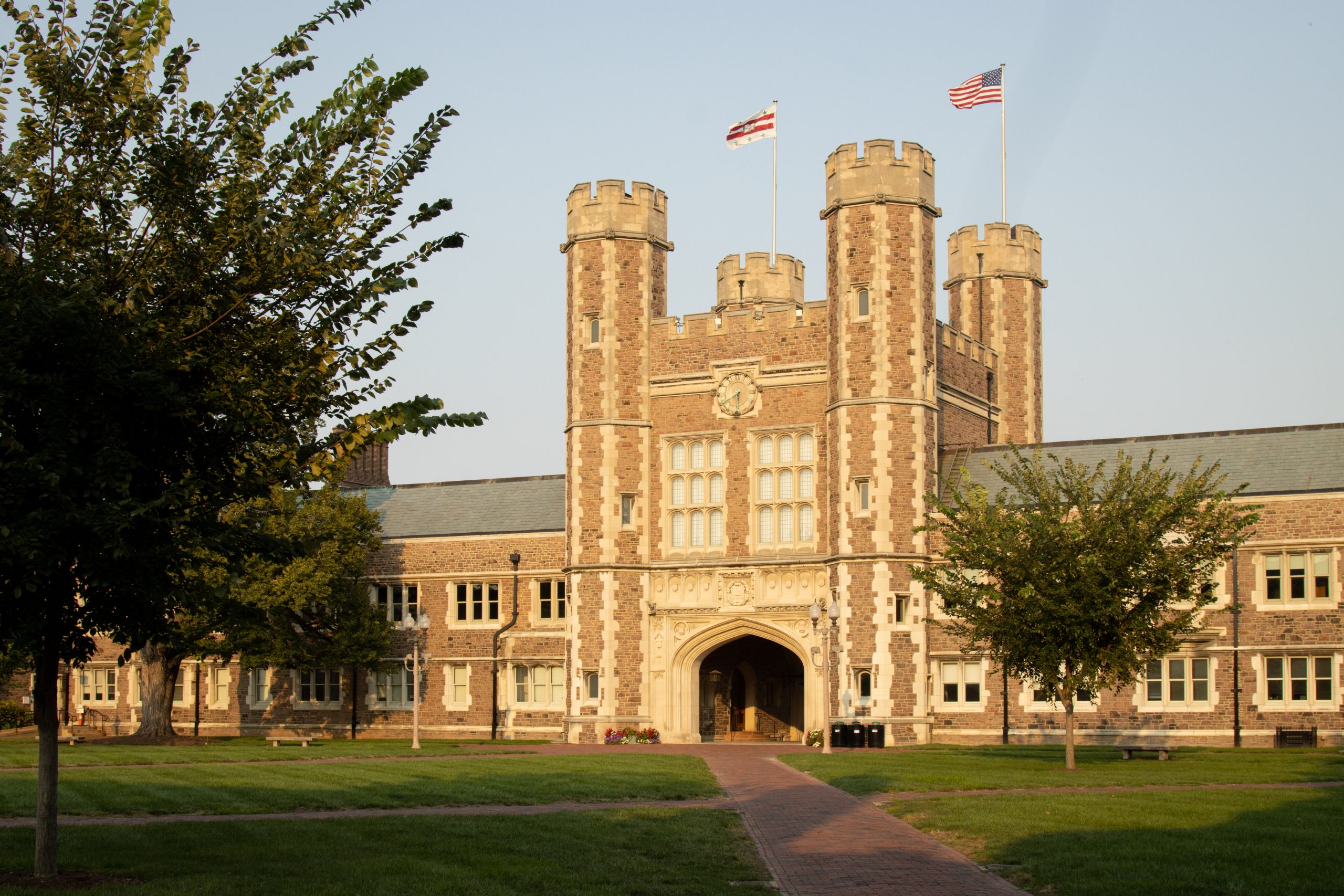News
What do I do if I’m exposed to COVID-19? Answers to some common pandemic questions
 Curran Neenan | Student Life
Curran Neenan | Student Life Brookings Hall stands on the east end of campus.
After a year of quarantine, isolation, and a “dire” COVID-19 situation last year, a vaccination mandate has allowed many of the safety protocols in place to shift this semester. Here is an overview of quarantine and testing policies and current virus numbers.
What do I do if I’m exposed to COVID-19?
One of the University’s top infectious disease experts, Dr. Steve Lawrence, clarified in an email to Student Life that vaccinated students do not need to quarantine and that unvaccinated students will be required to quarantine for 10 days regardless of testing conclusions.
“If a person has a known exposure to a COVID case and is considered a contact, then we perform post-exposure testing 3-5 days after the exposure if they are asymptomatic,” Lawrence wrote. “If, at any time, they develop symptoms, they need to be tested.” Given that students are overwhelmingly vaccinated and that COVID-19 vaccines are highly effective, these quarantine policies are significantly different from last year. This transition has created confusion regarding quarantine and post-exposure testing protocols.
Both vaccinated and unvaccinated students, if asymptomatic, will be tested 3-5 days after exposure to COVID-19. Vaccinated students need to wear masks indoors at all times around others and closely monitor for symptoms, Lawrence wrote.
How is testing being administered on campus?
Many community members were not previously aware of the free, asymptomatic testing available to all students in Danforth University Center 239 because the University chose not to advertise it. The asymptomatic testing center in the DUC is open 8:30 a.m. – 3:30 p.m. Monday through Thursday and Fridays 8:30 a.m. – 11 a.m, Associate Vice Chancellor for Student Support and Wellness Kirk Dougher wrote in a follow-up email to Student Life.
According to Lawrence, the University administered 144 optional asymptomatic tests and 75 student surveillance tests last week.
Surveillance testing is currently only administered for unvaccinated or partially vaccinated students, biweekly, though some community members have questioned the lack of widespread testing. Several peer institutions conduct regular surveillance testing for some portion of their vaccinated student population, but Washington University has been reluctant to adopt similar measures.
“We want to encourage good behavior and the surveillance testing itself does not necessarily give us that and in fact that might psychologically actually prevent good behavior,” Vice Chancellor for Student Affairs Anna Gonzalez said in an interview with Student Life earlier this month.
“The short answer is the public health approach is more about the entire population rather than focusing on the health of any one individual,” Dougher said. “For the entire health population, testing more frequently doesn’t really help you to do the things that we pretend like it does,”
The University is administering both nasal and spit tests. The nasal test is generally used for symptomatic individuals while the spit test is used for asymptomatic students, regardless of an exposure. Dougher wrote “there are some nuances that would necessitate that nasal tests be used for asymptomatic folks as well,” depending on the contact tracing team’s assessment.
What are the current COVID-19 numbers and what’s the plan if they spike?
Washington University reported four active COVID-19 cases among faculty members and staff and 23 active COVID-19 cases among students in Monday night’s update to the Danforth Campus COVID-19 dashboard, bringing the total number of cases since Aug. 30 to 14 for faculty and staff and 74 for students.
Dougher wrote last week that there were no students in quarantine housing but that the University was “following nearly 100 cases, 50 of which are on campus.”
“We are monitoring cases and transmission very carefully,” Lawrence wrote. “There are no signals yet that we will need to alter the mitigation strategy. Large clusters or transmission regularly occurring in situations where we don’t expect it could lead to targeted changes.”
Other peer institutions have already had to implement additional safety precautions including temporarily closing indoor dining, instituting a mask mandate and increasing testing frequency. After a high number of vaccinated students tested positive, Brown University and Duke University both recently announced stricter protocols to curb the spread of the virus.
If a similar situation occurs at Washington University, Dougher said that the University would be able to increase testing quickly, though staff shortages might cause delays.
“We’re as prepared as we can be, but there’s no mistake that there are staff shortages out there, and we did scale back our staffing to be able to accommodate that,” Dougher said. “It would take us a minute to be able to spin it back up, but you saw what we did last year. I’m sure we would be able to do the same again this year.”
Orli Sheffey contributed reporting.
Correction as of Sept. 23 at 7:12 p.m.: An earlier version of this story incorrectly described the hours of free asymptomatic testing. Testing is available from 8:30 a.m. – 3:30 p.m. Monday through Thursday and Fridays 8:30 a.m. – 11 a.m.
